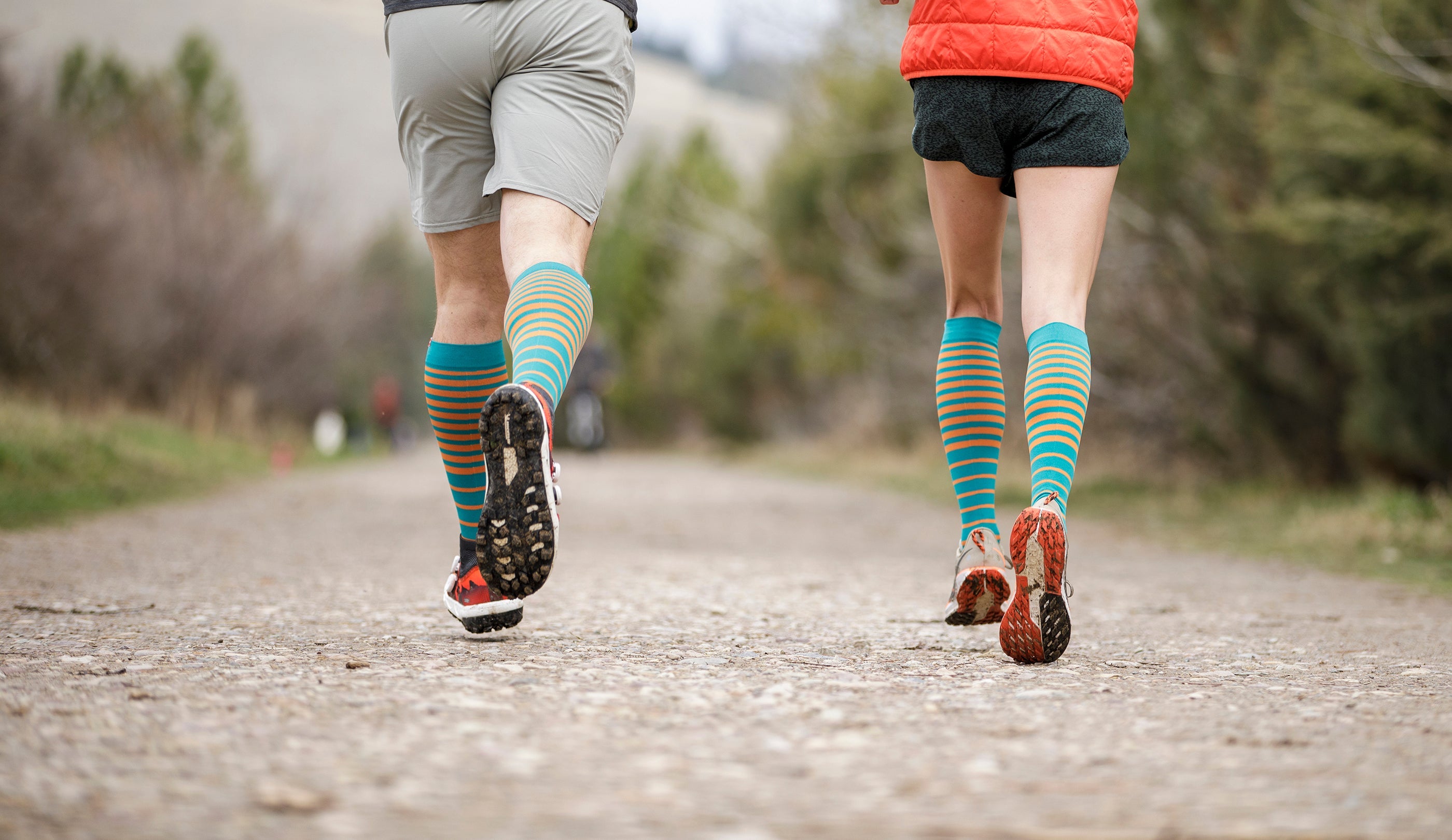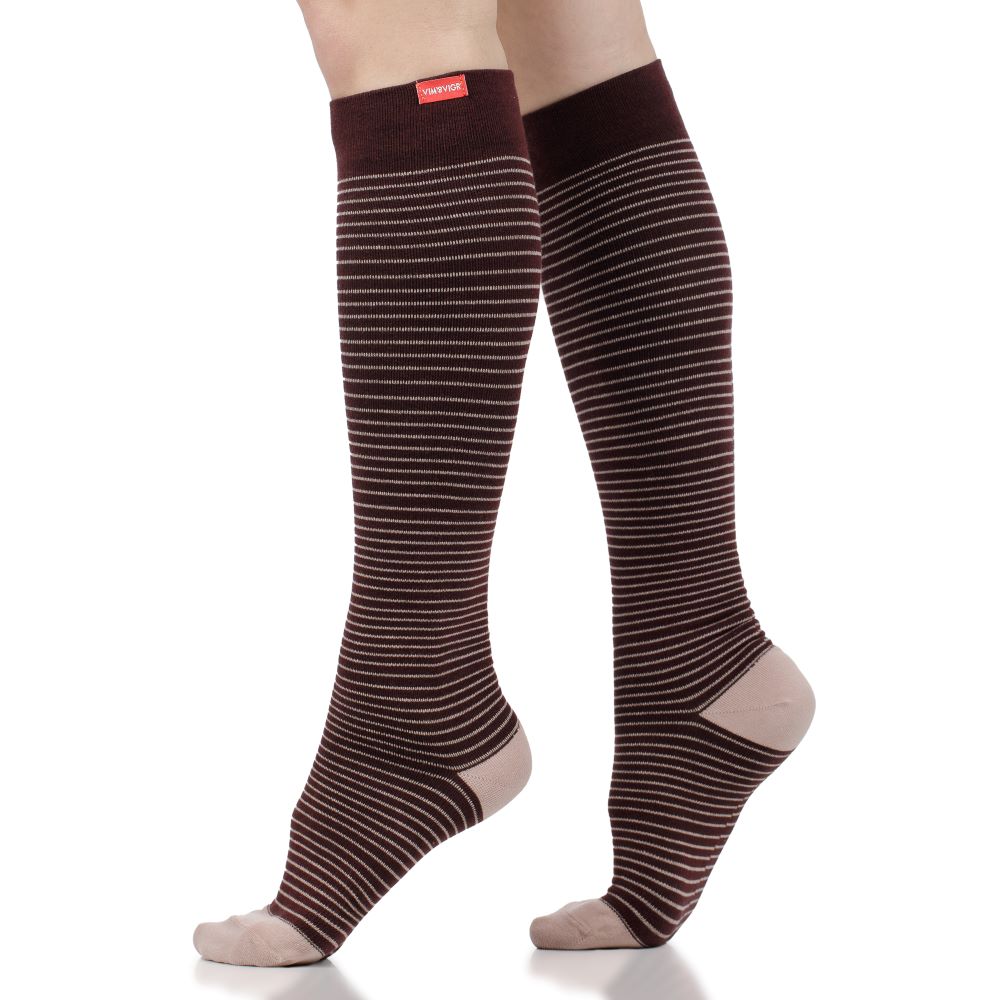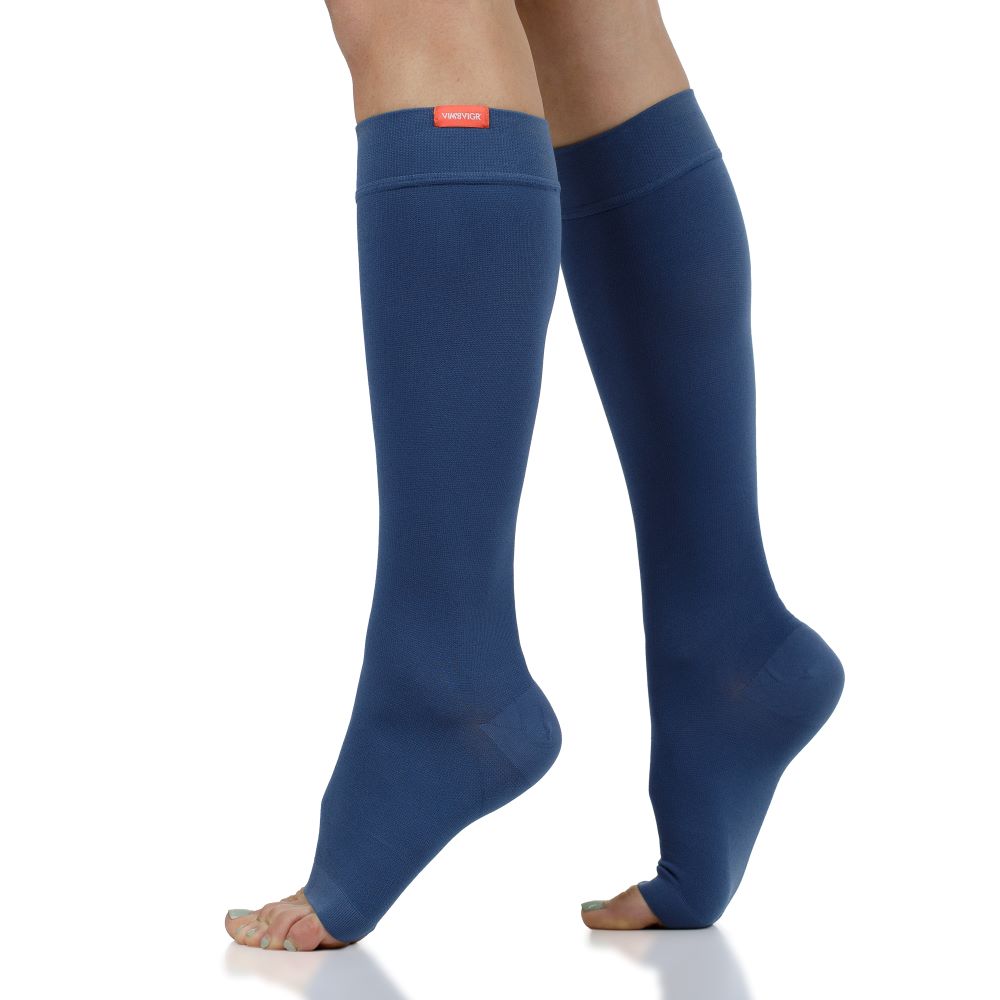Compression Socks for Dancers: The Benefits & How They Help
Dancing can be as taxing on the body as many other higher-impact sports (such as running or playing tennis, for example). After long hours spent on your feet, in ballet shoes, or during demanding workouts, anything you can do to relieve soreness, reduce swelling, and speed up recovery is a bonus.
Compression socks help dancers prevent foot and leg injuries, reduce pain and fatigue, and speed up recovery in between training sessions. They can also provide added support for the joints, extra ankle stability, and a welcome relief from swollen legs and ankles.
In this article, we’ll review the benefits of dance compression socks and give you the essential information you need to choose the best pair for you.
Can Compression Socks Help Dancers?
Dancers spend a long time on their feet in training and during performances. They can struggle with tight-fitting dance shoes. They also put a lot of strain on their ankles and legs, making them susceptible to injuries. Finally, they need to recover quickly from practice workouts and reduce swelling, fatigue, and soreness.

Good quality compression socks address all these requirements. They apply gentle pressure to the lower legs and feet, supporting the muscles and joints and boosting blood flow through the legs. This ensures that the legs don’t swell up and keeps fatigue from setting in as quickly.
Studies prove that compression speeds up recovery after a hard effort. It enables athletes to perform better in subsequent workouts and makes muscle soreness go down a little quicker. For dancers, this means getting back into pointe shoes and practicing more, sooner. As a result, compression socks can contribute to developing better and faster as a dancer.
What Do Compression Socks Do for Dancers?
Compression socks work on dancers’ legs and feet in three ways: they boost blood flow, massage the muscles and joints, and provide added support.
The design of graduated compression socks allows them to squeeze the lower end of the legs and feet harder, with pressure reducing gradually as they go up the leg. This stimulates circulation, ensuring that blood circulates back up towards the heart and doesn’t pool around the ankles. As a result, you are less likely to get swollen, sore ankles and feet. Boosted blood flow also contributes to quicker recovery after exercise, effectively delivering oxygen and nutrients to the muscles.
Moreover, the pressure applied by compression socks feels like a gentle massage on the legs and feet. Dancers can find them to reduce soreness and feelings of fatigue. During workouts, wearing compression socks can also reduce pain and delay the onset of fatigue.
Finally, since they grip the joints and calf muscles tightly, compression socks provide welcome support during high-impact activities. The shocks felt throughout the body from landing on a studio floor can take their toll on a dancer’s body. Compression socks reduce the micro vibrations that go through the feet and lower legs, contributing to feeling fresher and stronger and reducing the risk of injury.
The Benefits of Compression Socks for Dancers
Dancers can benefit from wearing compression socks or sleeves. They get added support for the joints and calf muscles, while reducing the risk of swelling and discomfort. And wearing compression garments has been shown to quicken recovery, so that you can keep dancing!
Preventing Foot and Leg Injuries
The tight hold of compression socks on the lower legs and ankles can help prevent injuries like a sprain. They also boost circulation in the lower part of the body, reducing swelling and the risk of developing blood clots and deep vein thrombosis.
Reducing Muscle Pain and Fatigue
Many studies have looked into the effects of wearing compression socks on fatigue and soreness during exercise. While there is no definitive link, the boost in blood flow helps keep muscles nourished and oxygenated. This can delay the onset of muscle soreness. At the same time, the massage and support provided by compression socks also contribute to an overall fresher, lighter feeling in the legs.

Promoting Stability and Alignment
Graduated compression socks are tightest around the ankle and foot. They can give additional arch support for dancers’ feet. Moreover, studies show that wearing compression items of clothing increases stability during movements such as a forward lunge - all the more helpful for dancers looking to maintain poise and flexibility.
Speeding Recovery
Several experiments including various types of athletes show that wearing compression garments after a hard effort helps speed up recovery. For the legs and feet, the boost in blood flow that compression socks provide helps reduce inflammation and swelling. Most importantly, the muscles benefit from receiving oxygen and nutrients quicker. This helps dancers recover and go back to training sooner.
Supporting Warm-Up and Cool Down
The support from compression stabilizes the joints and gets dancers ready for practice quicker. Be careful though: this doesn’t mean you should skip warming up! Compression socks simply boost the effects of an already existing warm-up routine, bringing more blood into the legs and feet and holding joints tightly.
When cooling down and subsequently during recovery, wearing compression socks or stockings helps deliver extra blood flow to the legs and feet. It also calms down any inflammation and swelling.
Enhanced Comfort and Protection
Overall, wearing dance compression socks keeps legs and feet tighter and more comfortable throughout practice or performances. The gentle pressure maintains joint alignment, while also minimizing the effects of micro vibrations on the leg muscles. With an ongoing boost in blood flow, dancers can also benefit from protection from injuries, swelling, and inflammation.
Compression Sock Types for Dancers
While the best-known compression socks are knee high, dancers have plenty of choice in terms of design and fit. You can adapt your sock choice to your outfit and comfort levels, choosing one of these options.
Knee-High Compression Socks
A classic cut, the knee-high compression sock is usually graduated, applying more pressure towards the foot and ankle, and less towards the knee. This leads to an effective boost in blood flow and protects dancers against developing blood clots or venous insufficiencies.
Open-Toe Compression Socks
Match your socks to sandals or simply enjoy the feeling of bare toes as you dance in open-toe compression socks. These are just as effective as the knee-high style in boosting peripheral blood flow. They simply allow for more ventilation and versatility in terms of shoe choice.

Compression Leg Sleeves
For dancers who wish to go completely barefoot, you can still benefit from supporting the calf muscles and shins in compression sleeves. While these don’t offer graduated compression, they still have a positive impact on blood flow to the calves and contribute to reducing swelling and the shock of landing.
Compression Leggings
Finally, for fuller coverage, compression leggings or tights are an ideal part of a dancer’s wardrobe. They give extra support throughout the leg, including to the knees, and boost circulation at the same time.
Choosing the Best Compression Socks for Dancers
Beyond knowing the style of socks that best fits with your dance moves, you also need to consider the sizing, fabric, and compression level to make the most of your pair.
Best Material Options
Dancing in hot weather takes its toll on the feet differently from cooler temperatures. To assist your spin-spot practice without getting blisters and chafing, you will need a pair of socks that’s both breathable and cooling. Merino wool is well-known for its temperature regulating properties, allowing dancers to perform their best in all weather conditions.
Alternatively, pick cotton or nylon compression socks for everyday training and performance. You can rely on cotton for softness and style, but remember it’s not as good at wicking moisture as merino wool or nylon.
If you opt for nylon, you’ll get a tight-fitting second skin feel that’s perfect for practicing high performance dance moves. To ensure you keep your feet dry, you can also choose an enhanced moisture-wicking nylon variety.
Selecting the Perfect Size
One of the key things to look out for when buying compression socks is the sizing. This is because, often, people choose the wrong size for fear of discomfort. Compression socks shouldn’t hurt - they need to be tight-fitting, but allow for normal blood flow and feel comfortable overall.
To ensure you get the right fit, measure the circumference of your calf muscles and cross-reference that against a dress size chart. This guide can help.
Determining the Right Compression Level
Perhaps less relevant for active dancers, it’s important to know that compression socks are not all the same. The level of pressure applied, measured in mmHg, varies from moderate, appropriate for everyday wear, to medical grade.
Dancers should start by wearing moderate compression socks in 15-20 mmHg level. If you have any medical concerns or conditions like varicose veins, consult with your doctor to see if you should switch to higher compression levels.
How to Wear Dance Compression Socks
So, when is best to wear compression socks for dancers and how can you make the most of them? Here are a few tips for getting all the benefits of these helpful accessories.
When to Wear Dance Compression Socks
Dance compression socks boost blood flow and massage the lower leg muscles to keep legs feeling fresh and prevent swelling and discomfort. If you wear them before your practice, you will arrive on the dance floor with energized legs and well-rested joints.
However, you can also wear compression socks for dancing, whether in practice or during a show. You’ll keep getting that boost in blood flow, while also feeling added support for your calf muscles and joints.
After workouts, compression socks can shorten recovery time thanks to delivering oxygen and nutrients to the muscles and reducing soreness and inflammation. You can wear them all day before bedtime for best results.

How Long to Wear Dance Compression Socks
In order to make the most of your compression socks, you can keep them on during practice or a show. You can also wear them for several hours straight afterwards to help relieve soreness from wearing pointe shoes or jumping and being on your feet for a long time.
We would not advise dancers to wear compression socks for too long when they’re just starting out. However, once you’re comfortable with the feeling of pressure applied to your limbs, you can keep them on for as long as you’d like. Just make sure you increase the time gradually.
Caring for Dance Compression Socks
We know you’ll love your compression socks, so you’ll want to keep them in top shape for as long as possible. Wear and tear on the balls of your feet and the heel cannot be avoided after many uses, but you can delay it by washing and drying your socks carefully. Follow our guide on caring for your socks to ensure the fabric doesn’t get damaged easily.
Additionally, follow these tips for longer life for your socks:
- Wash them after every wear;
- Don’t pull on them - be careful putting them on and taking them off;
- Wear gloves to protect the socks from longer nails or jewelry if needed;
- Avoid putting on compression socks on top of lotion or cream;
- Don’t wear knee-high compression socks on top of open wounds or sores;
- Always wear the right size for you - not too tight, but not too loose either.
Find your new favorite compression socks for dancing today!



















Leave a comment